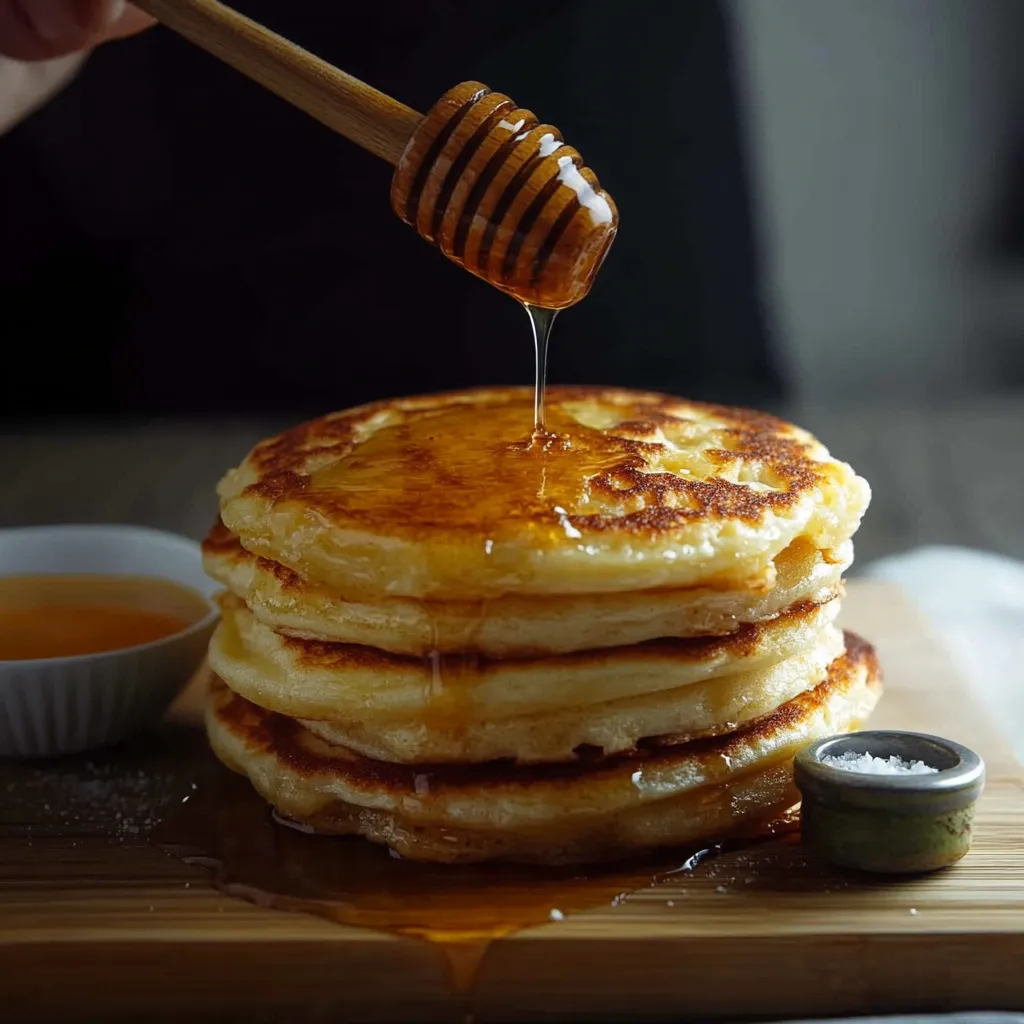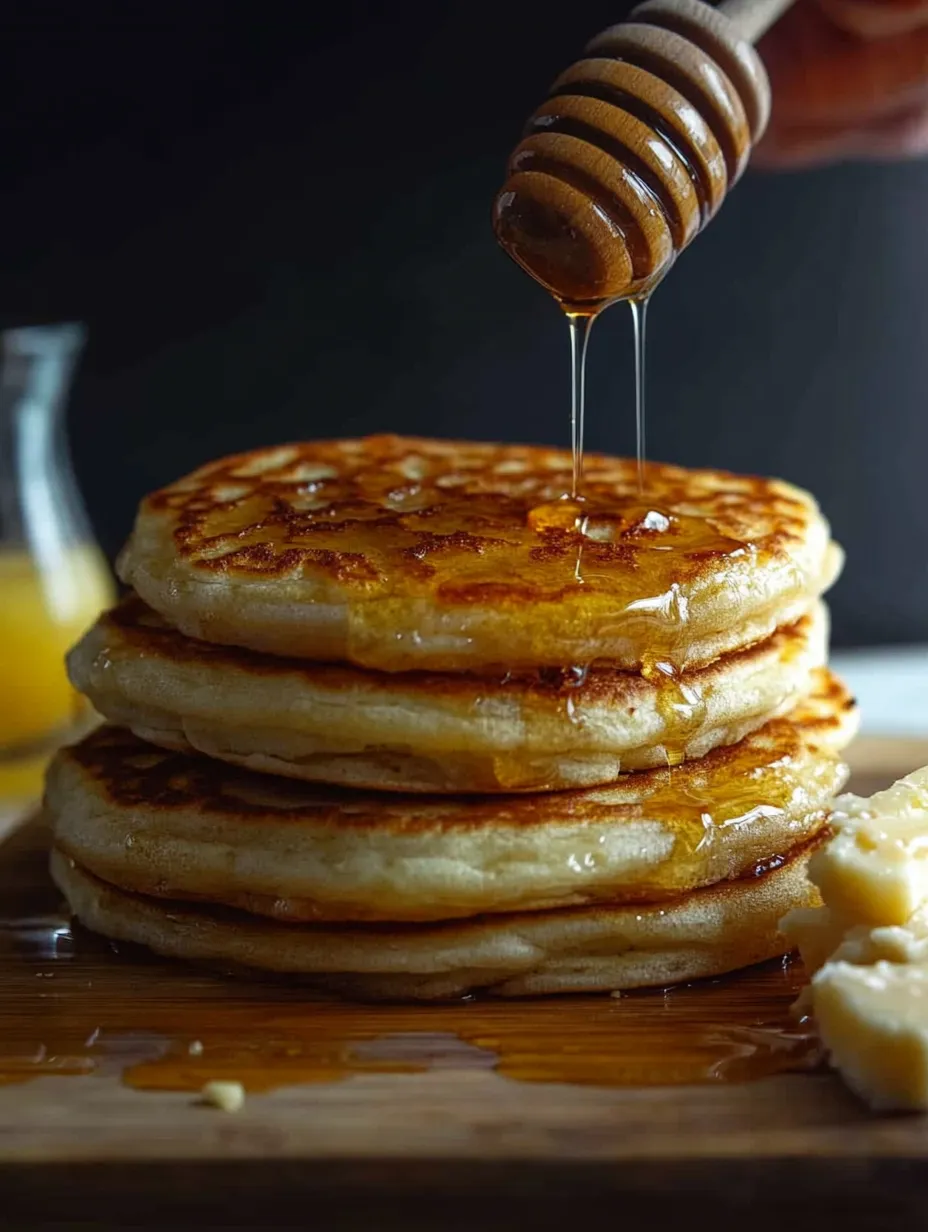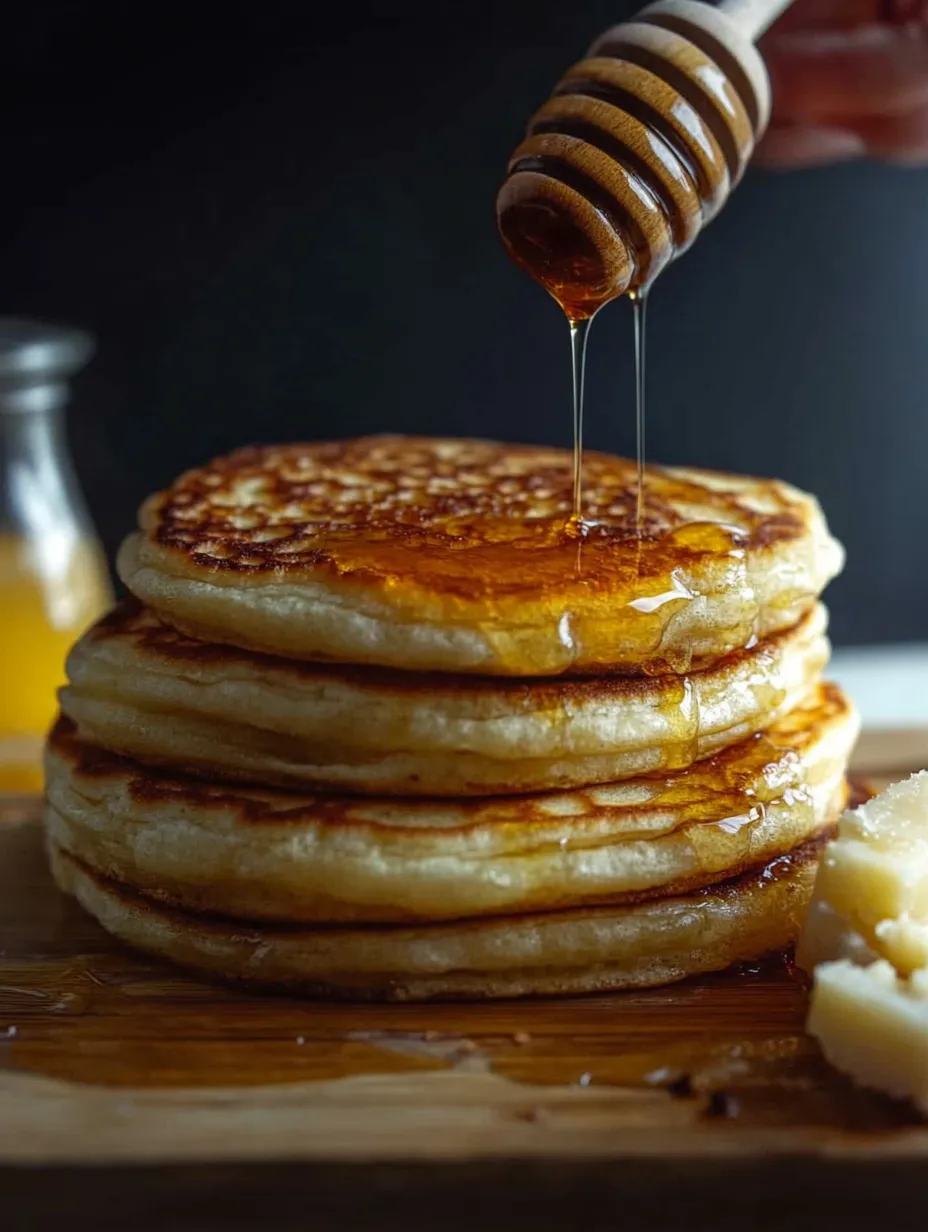 Pin it
Pin it
Golden discs of tender dough cradle tangy goat cheese in these rustic Cretan pancakes that capture centuries of Mediterranean culinary wisdom in each bite. The contrast between the slightly crisp exterior and the creamy cheese filling creates a textural masterpiece, while the drizzle of fragrant honey transforms simple ingredients into something truly extraordinary. Known locally as "Nerates Mizithropites," these humble pancakes embody the Cretan philosophy of celebrating quality ingredients through straightforward preparation—no eggs, yeast, or complicated techniques required.
I first encountered these pancakes while traveling through small villages in Crete, where a local grandmother prepared them on a well-seasoned cast iron pan over an open fire. The contrast between the crisp exterior and molten cheese interior, all bathed in local honey, created a flavor memory that lingered long after returning home. After much experimentation, this recipe captures that same rustic charm while using ingredients readily available in any kitchen.
Simple Ingredients
- All-Purpose Flour: Creates tender yet sturdy base for the pancakes. Unbleached varieties offer slightly more flavor complexity.
- Extra Virgin Olive Oil: Infuses the dough with distinctive Mediterranean character. Cretan oil traditionally has a robust, fruity profile worth seeking out.
- Fresh Lemon Juice: Adds subtle brightness and helps tenderize the dough. Just a tablespoon makes a remarkable difference in texture.
- Soft Goat Cheese: Provides creamy tanginess that balances the sweet honey. Traditional mizithra cheese can be substituted with a mixture of goat cheese and feta.
- Raw Honey: Transforms these pancakes with floral sweetness. Single-origin varieties like thyme or pine honey offer distinctive flavor notes.
- Sea Salt: Enhances all flavors with subtle mineral notes. Flaky finishing salt makes a beautiful garnish when sprinkled over the honey.
- Chopped Walnuts: Add pleasant textural contrast and earthy depth. Lightly toasting before serving intensifies their flavor substantially.
- Ground Cinnamon: Introduces warm aromatic notes that complement both cheese and honey. A light dusting just before serving is traditional.
Rustic Method
- Dough Development:
- Begin by measuring two cups of flour into a large mixing bowl. Make a well in the center and add one-quarter cup of olive oil, one tablespoon of lemon juice, and half a teaspoon of salt. Using a fork, gradually incorporate the flour into the liquid ingredients, creating a shaggy mixture. Slowly add one cup of water, continuing to mix until a soft, slightly sticky dough forms. The consistency should resemble a very thick pancake batter—wet enough to be sticky but firm enough to hold its shape. Drizzle an additional tablespoon of olive oil over the dough, cover the bowl with a kitchen towel, and allow it to rest for at least two hours at room temperature or overnight in the refrigerator. This resting period hydrates the flour completely, resulting in more tender pancakes.
- Cheese Preparation:
- While the dough rests, prepare the cheese filling by placing one cup of soft goat cheese in a small bowl. If using a firmer cheese or adding feta, mash it with a fork until crumbly, then gradually add one to two tablespoons of water, continuing to mix until you achieve a smooth, spreadable consistency similar to thick yogurt. The ideal texture spreads easily but isn't so loose that it runs. Cover and refrigerate until ready to use, allowing the cheese to come to room temperature about 15 minutes before filling the pancakes for easier spreading.
- Pancake Formation:
- When ready to cook, heat a heavy skillet or griddle over medium heat and lightly coat the surface with olive oil. Dip your hands in a small bowl of water to prevent sticking, then pinch off a golf ball-sized portion of dough. Flatten it in your palm to create a disc about three inches in diameter. Place a generous teaspoon of the prepared cheese in the center of the dough disc. Again with moistened fingers, carefully gather the edges of the dough upward and pinch them together to completely enclose the cheese filling, forming a sealed ball. Place the ball in the heated skillet and gently flatten it with your palm or the back of a spatula until it's about half an inch thick.
- Cooking Technique:
- Cook the pancakes for approximately two to three minutes on each side until golden brown with light spotting. The key to perfect texture is maintaining medium heat—too hot and the exterior will burn before the interior cooks properly; too low and the pancakes will become tough rather than developing a light crust. Work in batches of two or three pancakes at a time, depending on your skillet size, adding a light drizzle of olive oil between batches. Transfer finished pancakes to a plate and cover loosely with a clean kitchen towel to keep warm while cooking the remaining dough. Serve immediately, drizzled generously with honey and sprinkled with chopped walnuts and a light dusting of cinnamon.
 Pin it
Pin it
My Cretan host explained that the secret to these pancakes is embracing their rustic imperfection—no two should look exactly alike. I've found this recipe particularly meaningful for introducing children to cooking, as the forgiving dough and hands-on shaping process create a fun, tactile experience. My niece loves helping create the cheese-filled bundles, taking pride in sealing each one carefully while developing essential cooking skills.
Perfect Pairings
Fresh seasonal fruit provides vibrant contrast to the rich, honey-drizzled pancakes. Greek yogurt offers cool, tangy complement when dolloped alongside warm servings. Strong black coffee balances the sweetness with bitter complexity in traditional Greek fashion. Fresh mint tea creates refreshing aromatic pairing that enhances the honey's floral notes. Toasted sesame seeds introduce nutty dimension when sprinkled atop the finished pancakes.
Creative Variations
Savory direction removes honey and adds herbs like fresh mint or oregano to the cheese. Dessert enhancement incorporates cinnamon and chopped walnuts into the cheese filling. Breakfast adaptation serves the pancakes with Greek yogurt and fresh berries. Cheese blend introduces a mixture of cheeses like ricotta, feta, and mizithra for complex flavor. Herb-infused honey elevates the topping with thyme or lavender steeped in warm honey before drizzling.
Storage Solutions
Fresh preparation yields optimal results, though the pancakes remain delicious for several hours at room temperature. Refrigeration maintains quality for up to two days when stored in airtight containers. Reheating achieves best results in a dry skillet over medium-low heat for about one minute per side. Advance preparation works for components—the dough can rest overnight and cheese filling can be made a day ahead. Freezing is possible but not ideal—if necessary, freeze cooked and cooled pancakes in single layers separated by parchment paper.
 Pin it
Pin it
These Cretan honey pancakes represent Mediterranean cooking at its finest—simple ingredients transformed through thoughtful preparation into something truly memorable. The harmonious balance between savory cheese, tender dough, and sweet honey creates a dish that has sustained generations of islanders through everyday meals and celebrations alike. I've shared this recipe with numerous friends who consistently report back that these humble pancakes have become a beloved addition to their cooking repertoire—the ultimate endorsement for any traditional recipe.
Frequently Asked Questions
- → Can I use a different type of cheese?
- Yes, you can use any soft cheese like ricotta, feta, or a mix of your favorites.
- → Can I make the dough ahead of time?
- Yes, the dough can rest overnight in the fridge. Let it come to room temperature before cooking.
- → Can I freeze these pancakes?
- Yes, but they’re best enjoyed fresh. Reheat in a skillet or oven for the best texture.
- → What can I serve with these pancakes?
- Serve with honey, nuts, cinnamon, jam, or fresh fruits for extra flavor.
- → Can I make this gluten-free?
- Yes, use gluten-free flour to make this recipe gluten-free.
